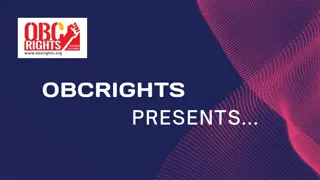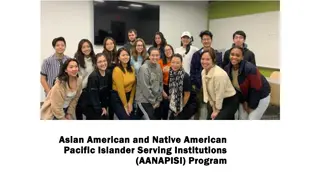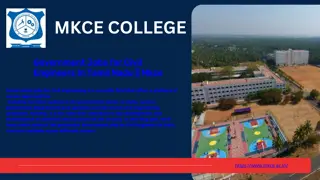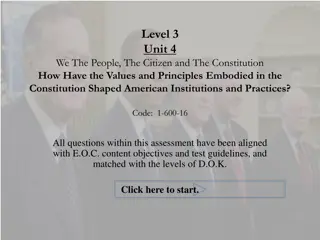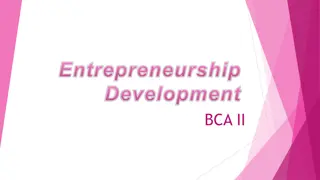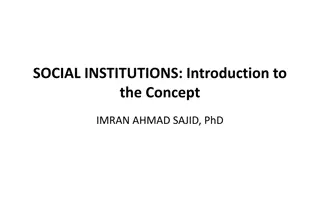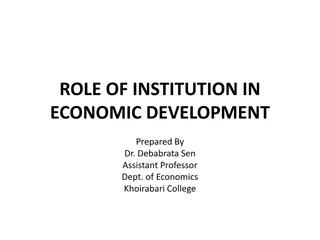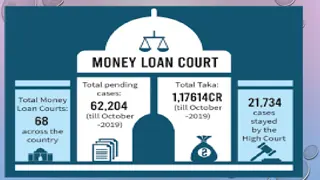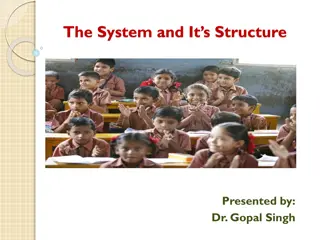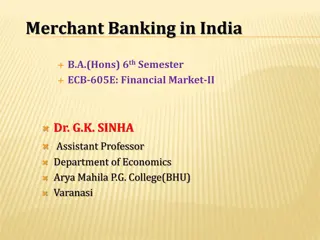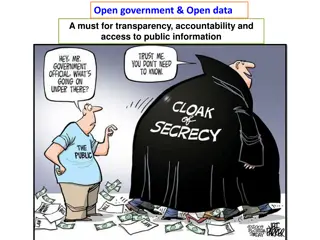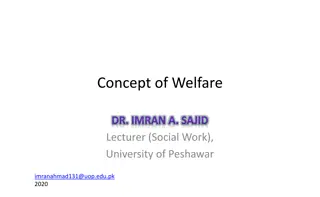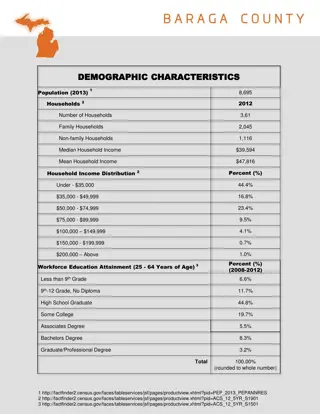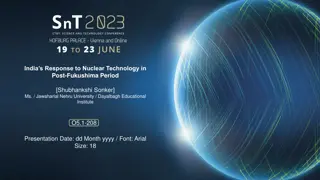Understanding the Working of Key Government Institutions in India
Explore the functioning of the legislature, executive, and judiciary in India through key concepts like office memorandum, Mandal Commission, and the resulting debates and legal challenges. Gain insights into decision-making processes, policy implementation, and dispute resolution within the country's governance framework.
Download Presentation

Please find below an Image/Link to download the presentation.
The content on the website is provided AS IS for your information and personal use only. It may not be sold, licensed, or shared on other websites without obtaining consent from the author. Download presentation by click this link. If you encounter any issues during the download, it is possible that the publisher has removed the file from their server.
E N D
Presentation Transcript
WORKING OF INSTITUTIONS MODULE-1 DEVAKY JILAS DEVAKY JILAS AECS 5, MUMBAI. AECS 5, MUMBAI.
AIM .To understand the working of the three institutions- legislature, executive and judiciary. .To know the manner in which major decisions are taken & implemented in the country. . To know how disputes regarding the decisions taken are resolved. Main contents. Main contents. 1. Office memorandum 2. Mandal commission 3. Decision makers 4. 5. 6. Parliament- a. importance b. functions c .Two houses. Executives- Permanent & Political. Powers of president, prime minister & cabinet ministers 7. Judiciary.
OFFICE MEMORANDUM A communication issued by a appropriate authority stating the decision or policy of the government. The government issues hundred of orders every day on different matters A office memorandum was the culmination of a long chain of events.
MANDAL COMMISSION The government of India had appointed the second backward classes commission in 1979. It was headed by B.P Mandal, so it was popularly known as the Mandal commission. It was asked to determine the criteria to identify the socially and educationally backward classes in India and in 1980 it recommended 27% of govt. jobs to be reserved for SEBC. Janta Dal formed the govt. in 1989 & its leader V.P. Singh became the Prime minister. His govt. took measures to implement the commission report. In this way an office memorandum no. 3216/31/90 was born on April 13,1990.
OPPOSITIONS AGAINST THE MANDAL COMMISSION . This order led to wide spread protest & counter protest. . Some people thought that reservation are against the principle of equality and it will affect a lot of job opportunities. They felt that this is unfair to those who did not belong to backward communities as they would be denied jobs even though they could be more qualified. Some felt that existence of inequalities among people of different castes in India necessitated job reservations. This would give a fair opportunity to those communities who so far had not adequately been represented in government employment.
Some persons & association opposed this order and filed a no. of cases. The supreme court bunched all these cases together & called it as the Indira Sawhney and others Vs Union of India cases. Eleven judges of the supreme court heard arguments from both sides. The supreme court judges in 1992 declared this order valid but also asked the govt. to modify its original order. It said that well-to-do persons among backward classes should be excluded from the benefit of reservation.
THE DECISION MAKERS Decisions are made by the government. President of India is the head of the state and all decisions are taken in his name. Prime minister is the head of the government and actually exercises the governmental powers. Decisions are made in the cabinet meetings. Parliament has two houses. Lok sabha & Rajya sabha.






